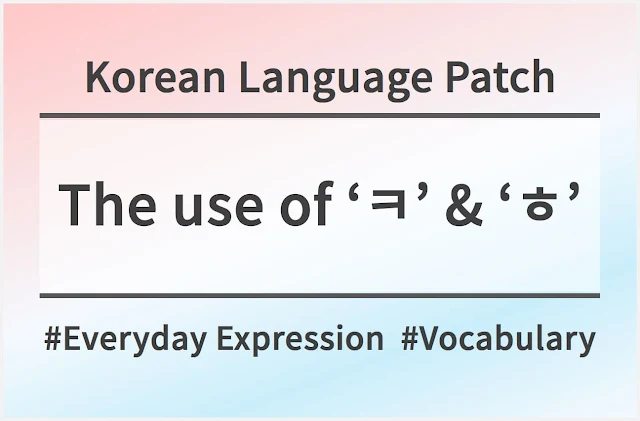Let’s explore the native speakers’ meanings and nuances of ‘ㅋ’ and ‘ㅎ’ as expressions of laughter in Korean text conversations.
Basic Meaning of ‘ㅋ’ and ‘ㅎ’
‘ㅋ’ and ‘ㅎ’ are fundamentally letters that represent the sound of laughter.However, in actual spoken conversation, people almost never laugh out loud by saying “크크…” or “흐흐…”.
“크크..” is, in a dictionary sense, meant to represent a low, quiet laugh with a playful or slightly sneering tone. However, in real life, no one actually says this aloud, and it would sound very strange if they did.
Similarly, “흐흐…” is rarely used in speech and, if anything, might come across as mentally unstable or perverted.
Nevertheless, in text communication, expressing laughter with just these consonants is extremely common.
These days, knowing how to use ‘ㅋ’ and ‘ㅎ’ appropriately in messages has become an essential part of sounding natural in Korean.
The Number of Repetitions of ‘ㅋ’ and ‘ㅎ’
The number of times ‘ㅋ’ and ‘ㅎ’ are repeated can lead native speakers to interpret them differently.Meaning According to the Repetition of ‘ㅋ’
-
1 time (ㅋ): Expresses a smirk or a slight chuckle; when added to the end of a sentence, it gives off a subtle, somewhat sarcastic tone.
-
2 times (ㅋㅋ): Can be used when something is mildly funny, but is also often used when you have nothing else to say or want to end the conversation casually.
-
3 times (ㅋㅋㅋ): The standard way to express laughter in text.
-
4 times or more (ㅋㅋㅋㅋ…): The more you extend ‘ㅋ’, the funnier you find something. Often seen in comments on amusing online posts.
Meaning According to the Repetition of ‘ㅎ’
-
1 time (ㅎ): Similar to the nuance of a single ‘ㅋ’.
-
2 times (ㅎㅎ): Indicates something is funny.
-
3 times or more (ㅎㅎㅎ…): Also expresses a very funny situation, but in such cases, ‘ㅋㅋㅋㅋ…’ is more commonly used.
Other Onomatopoeic Expressions for Laughter
Most of these are either rarely used or sound awkward in daily conversation, but there are various laughter expressions as shown below:
-
하하하: Depicts a man’s laughter, typically used in children’s books.
-
호호호: Depicts a woman’s laughter, also mainly seen in children’s books.
-
깔깔깔: Represents a loud, cheerful, and refreshing laugh. Usually used to convey the feeling of a hearty or playful laugh.
-
키득키득 (ㅋㄷㅋㄷ): A small, ticklish kind of giggle rather than an outburst of laughter. Sometimes young women or children might use it in text messages, but it is almost never heard in actual spoken conversation.
-
헤헤: A light laugh with a sense of shyness or embarrassment, or a playful tone. It is rare, but can be used to shyly express happiness when being complimented, without sounding too strange.

